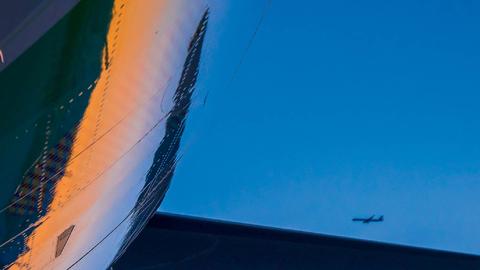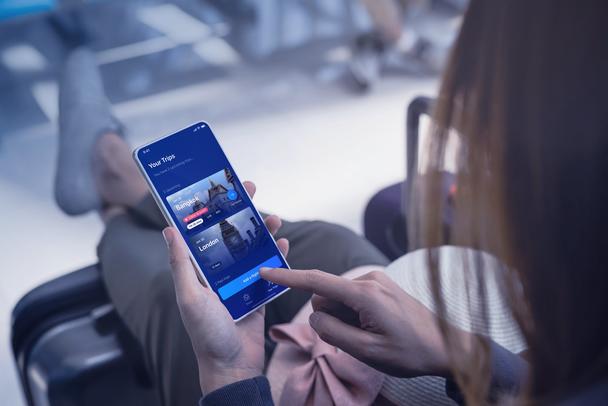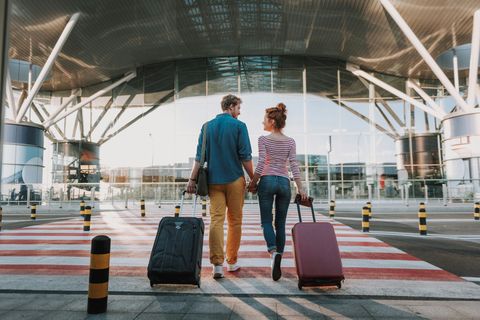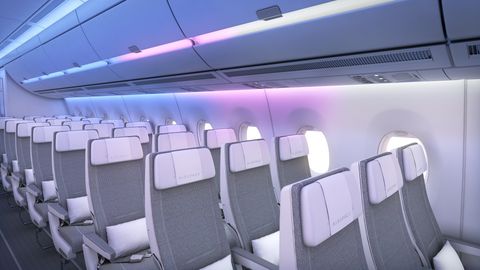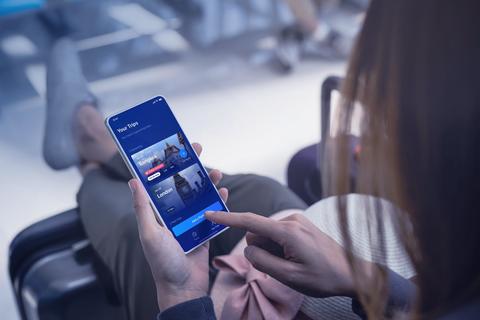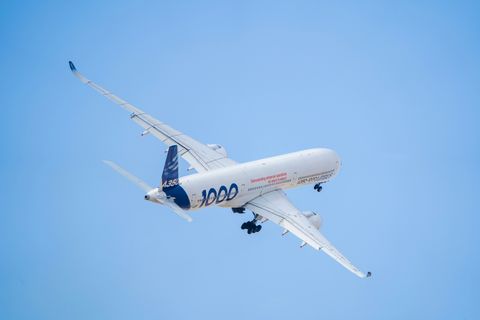As an immediate response to the COVID 19 crisis, we have launched the Keep Trust in Air Travel initiative (KTiAT). As an industry, we now need to move from the need of an immediate response to a long-term sustainable capability to face potential future similar pandemic. This is why we have decided to move the KTiAT initiative to the now named Health Onboard mission. It will be integrated in the Product Safety function in order to benefit from the Flight safety culture Airbus has included in its DNA decades ago.
- Yannick Malinge, SVP & Chief Product Safety Officer at Airbus
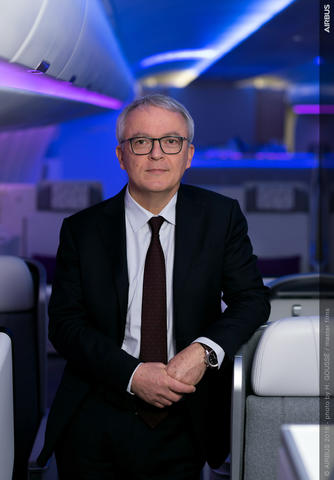
Travel with trust
Airbus has always taken great care to enable a safe environment on board an aircraft - a commitment that remains unchanged and enhanced in a post-pandemic world. Our aircraft are designed and equipped by leveraging the latest technology for the most rigorous and absolute best in health, safety, and comfort.
As we take to the skies again we want to provide facts to reassure and dispel myths so we can make sure flying continues to be a source of enjoyment for all. Together with our industry partners and regulatory agencies, we are working to examine all aspects of the end-to-end travel experience to ensure it continues to be healthy and safe.
However, we cannot do this alone. We believe that all of us - from airlines, pilots and crew, to members of the airport community, authorities, and you - have a role to play when it comes to adopting health and safety routines throughout our respective air travel journeys. Whether it is on the way to or at the airport, behind the scenes at baggage, ground, and cargo handling or for cabin crew and pilots, we all need to play an active role, so we can commit to getting everyone back to the skies and maintain trust in air travel.
But we are going further, collaborating with the brightest minds in and outside of Airbus, harnessing forward-looking, technical solutions to protect everyone travelling onboard our aircraft to create a new and continuous travel experience.
In a post-pandemic world, a safe and healthy journey will involve a number of additional actions that begin even before the journey starts. Preparing for a trip, travelling to the airport, passing through baggage drop off and security, waiting to board a flight and passing through the gate, all of these stages of the air travel journey are now being redesigned to ensure everyone’s health and safety is the top priority.
This is why it is essential to complement existing hygiene best practices with new health and safety routines. All of the measures and routines below combined create a safe travel experience:
- Wearing a face covering or mask correctly (covering mouth and nose). Check the next question ‘How can I prepare for my trip?' for more tips on what you can do to travel in a healthy way
- Relying on the extremely clean air on board. Why? Read further down in the feature section ‘Clean air and cabin' why the air inside the cabin is clean
- Regular deep-cleaning practices by the airline crew and cleaning services
Get informed. The instructions, guidelines and safety measures provided by the airline are the first and best source of information. Please visit the websites of our aviation partners indicated below for up-to-date information.
Go digital. Wherever possible, prepare all logistics online: check in online so printing a boarding pass at the airport is not necessary, and take advantage of the features offered through the airline’s mobile applications.
Be mindful. Respect and apply new health and safety routines and be in good health before starting a journey.
Health and safety best practices

Our commitment to health and safety

For safe & healthy travels download the travel guide infographic now :
We are all adapting to a “new normal” and the situation is evolving on a daily basis. It’s no secret our flying experience will not be the same as it was before. The entire travel experience will be different depending on the departure and arrival airports, the airline, and the local regulations. It is highly recommended that the websites of our aviation partners below are consulted for the most up to date travel information and guidelines.
#KeepTrustInAirTravel
Share your new travel experience on Instagram and Twitter using #KeepTrustInAirTravel to be featured on our wall.
Taking to the skies again
Today, the outbreak of a global pandemic has brought with it a great deal of concern. We might see changes in the way we will travel for the foreseeable future. Our world may not be the same as it was half a century ago, but aviation will continue to play a key role. During the pandemic, we counted on aviation for delivering vital air cargo services to boost global supply chains, evacuating stranded passengers, and enabling time-critical life-saving emergency and humanitarian response missions.
Since its early days (50 years ago) Airbus has always been driven by the dream of human flight, engineering machines that took to the skies, stimulating the human desire for connection and curiosity, and transporting vital goods and services around the world. We worked with and continue to work with the vast ecosystem of innovation technologies, engineering communities, governing bodies and airlines, airports, associations and partners to build what is today, by far the safest means of travel.
In the past as in the future, aviation will continue to stimulate the recovery by connecting global economies and enabling the revival of trade and tourism. It will also be important for renewing and maintaining social and family ties.
That’s why our number one priority remains unchanged: the continued safe transport of everyone who flies aboard our aircraft. After all, our purpose of uniting, and safeguarding people across the world comes with great responsibility.
Clean air and cabin
From the moment the aircraft is designed - optimum health considerations are taken into account in the cabin. This space is carefully constructed to ensure a safe and comfortable environment for all. As a golden standard - Airbus conducts regular simulation studies to maintain an optimum design of airflow in the cabin.
These simulations are robust - powered by computational fluid dynamics modelling - and provide a highly accurate guideline for the air flow, designed to remove the smallest particulates from the exhalation area of each passenger.
The simulations are frequently compared to actual onboard tests to ascertain that the models match reality. Independent studies conducted by researchers from Harvard demonstrate that the airflow design onboard an aircraft is effective in removing contaminants to such a degree that it predominantly shows flying remains safe, or is even safer, than routine daily activities, such as going to the grocery store.
Here is why the cabin air flow design provides optimised clean air onboard an aircraft.
Clean air
We have leveraged innovation for decades to design a cabin environment which is safe for passengers and crew to breathe clean air throughout their journeys.
The air in the cabin is renewed about every 2-3 minutes. It is a mix of fresh air drawn from outside and purified air from the cabin that has passed through extremely efficient filters. These are called High-Efficiency Particulate Arrestors (HEPA) filters, which remove more than 99.9% of particles present in the air, down to the size of microscopic bacteria and virus clusters.
Air enters the cabin through vents near the overhead bins, travelling downwards before being removed via vents in the floor. This strong downwards flow prevents horizontal air movement within the cabin, reducing risk of cross-contamination between adjacent seat rows.
The air is then either expelled from the aircraft or recirculated via the HEPA filters.
In a recent episode of our Airbus podcast 'We make it fly' Jean-Brice Dumont explains in more detail what exactly HEPA filters are and why the air in the cabin is clean.
Clean cabin
Airlines perform thorough cleaning and disinfection routines to create a hygienic environment for everyone on board. Specialised teams work with highly efficient approved products and methods to conduct thorough disinfection of aircraft cabins, lavatories and their surfaces, crew rest and galley working areas as well as the cockpit.
Airbus provides information to airlines and operators on appropriate disinfection techniques - pre-flight - as well as on the type of products to use in the aircraft.
In addition, we are engaging and exchanging with airlines and aviation partners to look into additional techniques to disinfect.
A clean cabin for safe flying
Here are some of the solutions that we are testing for efficiency and feasibility:
Electrostatic spraying or fogging (also known as misting): Using a fogging machine to spray disinfectant liquid on aircraft surfaces in order to sanitise the cabin.
Ultraviolet (UV) light: Permitting cabin disinfection by exposing aircraft interior surfaces to short-wave ultraviolet (UV-C) light.
Gaseous H₂O₂: A disinfection method based on diffusing vaporised hydrogen peroxide, avoiding condensation.
Thermal disinfection: Heating the cabin to a temperature much higher than usual ambient temperature (circa 55°Celsius) to deactivate viruses without the use of chemicals.
Antimicrobial polishes: Applying polish solutions to surfaces within the aircraft cabin that deactivate bacteria and virus traces, and protect against the accumulation of viral loads between cleaning cycles.
Working together
Airbus, alongside our aviation partners and regulatory bodies are committed to providing the best possible travel information, regulations and guidelines. Discover these below (external links):
EASA | European Aviation Safety Agency
ATAG | Air Transport Action Group
ecdc | European Centre for Disease Prevention and Control
Discover Safety at Airbus
Latest news

